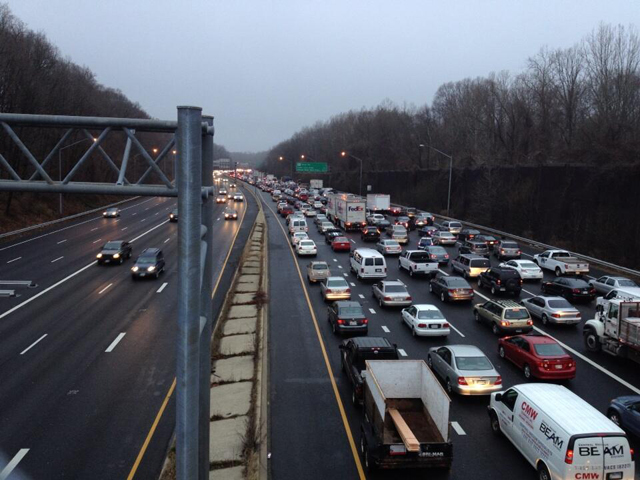WASHINGTON — There are only a few things that really bring Washingtonians together. We’ve got our sports teams. Maybe the monuments. And then — overriding all of that — we have traffic.
D.C. traffic unites us in a nonpartisan, collective hell. And AAA’s Lon Anderson has been trying to make it less hellish for the past 21 years. But after two decades, Anderson has had enough — he is retiring.
“I’m going to miss the traffic,” Anderson said, joking.
On Tuesday, WTOP asked Anderson to look back on his career and help explain why traffic here has become so infamously difficult. Part of the problem, he said, is that not much has changed, particularly on the Capital Beltway, one of the region’s major arteries.
“The Maryland Beltway today is the same as it was 20 years ago. The only difference is it’s got a whole lot more traffic,” Anderson said, of the 64-mile stretch of Interstate 495 that loops around the District, cutting through suburbs in Maryland and Virginia.
Anderson shared his thoughts on the American Legion Bridge — the portion of I-495 that goes over the Potomac River, connecting Montgomery County, Maryland to Fairfax County in Virginia.
“We’ve got no more capacity across the river than we did 20 years ago, and we need so much more,” Anderson said. “We need another bridge.”
Virginia Department of Transportation has suggested extending the Interstate 495 Express Lanes over the American Legion Bridge to the Interstate 270 Spur in Maryland in order to alleviate some of the traffic. But Maryland has said it is not interested in building another crossing, especially into the rural areas of northwestern Montgomery County between the Potomac River and I-270.
So, is there any good news when it comes to D.C.-area traffic?
Anderson said the Wilson Bridge, the Springfield interchange, and the express lanes on the Beltway and Interstate 95 are making a difference. But making major improvement is a matter of “dollars and cents,” the need for more national transportation funding.
“Some would say the last time we properly funded transportation, Dwight David Eisenhower was in the White House,” Anderson said.
There was one thing Anderson said he’d like to magically make happen in the last month on the job — putting someone in charge of transportation who has the ability to hold people accountable.
“Maryland does what’s best for Maryland. Virginia does what’s best for Virginia. D.C. does what’s best for D.C.,” Anderson said. “Nobody does what’s best for the Washington-metropolitan area.”






